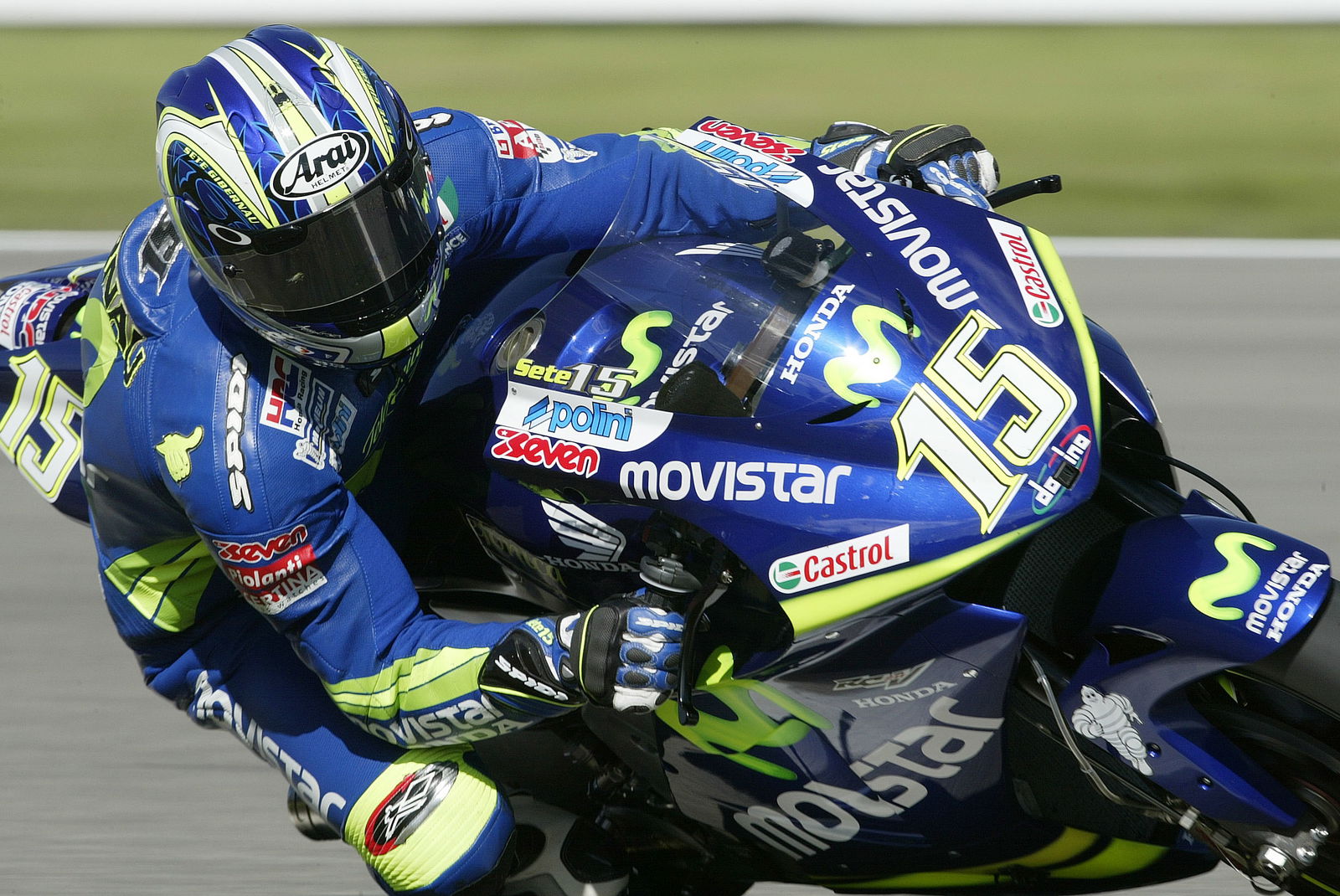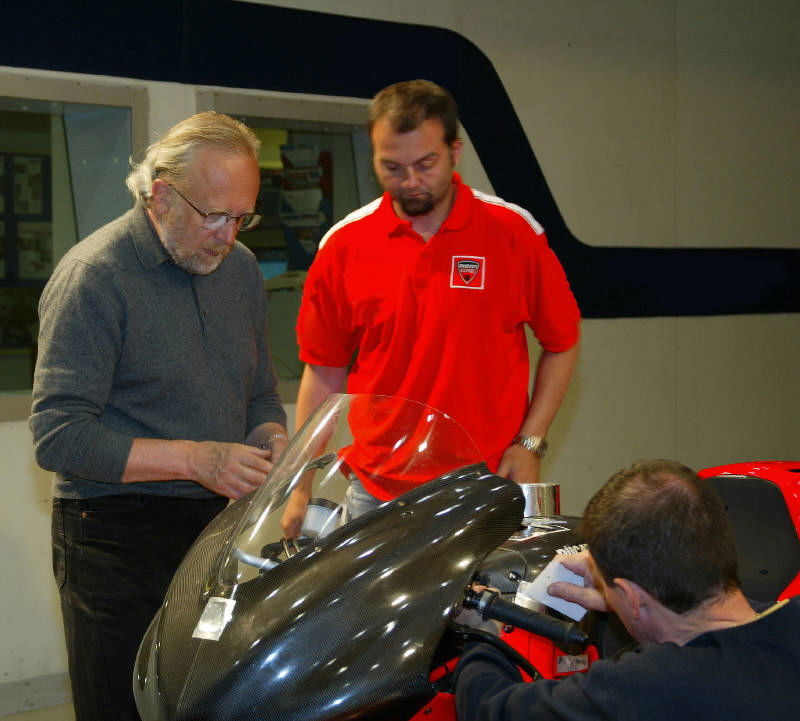Ducati reveals wind tunnel work.
MotoGP is the world's fastest motorcycle racing series, so it's no surprise that aerodynamics are a crucial factor in machine development - along with engine, chassis and tyre performance.
That is why Ducati Corse invests heavily in constantly evolving the aerodynamic performance of its Desmosedici. So far, the company has spent around 1100 hours doing wind-tunnel tests with the 990cc V4 four-stroke, which has a top speed capability in excess of 340kmh.
And even if the improvements gained from these tests are often tiny, every little helps.

MotoGP is the world's fastest motorcycle racing series, so it's no surprise that aerodynamics are a crucial factor in machine development - along with engine, chassis and tyre performance.
That is why Ducati Corse invests heavily in constantly evolving the aerodynamic performance of its Desmosedici. So far, the company has spent around 1100 hours doing wind-tunnel tests with the 990cc V4 four-stroke, which has a top speed capability in excess of 340kmh.
And even if the improvements gained from these tests are often tiny, every little helps.
"The advantages gained through improving aerodynamic penetration may not be huge," said Ducati Corse technical director Filippo Preziosi. "But an advantage of five hundredths of a second per lap, which is so small and difficult to quantify, becomes an advantage of one second during a 20 lap race, which can mean finishing in front of or behind your rival."
Of course, aerodynamics isn't just about increasing straight-line speed - it's also about improving fuel consumption, high-speed stability and cornering performance. It is therefore these four factors that concern Ducati Corse engineers whenever they travel to Britain to use their preferred car wind tunnel.
Ducati has used various different wind tunnels over the past decade or so but favours this one particular tunnel, even though it has taken a while to get good results with a motorcycle.
On average, Ducati uses these facilities once a month, with aerodynamics consultant Alan Jenkins always in attendance. Jenkins began working with Ducati before the MotoGP project, having previously worked with a number of F1 teams, including McLaren, Stewart and Prost.
During each UK visit, new bodywork parts, produced by a fast-prototyping 3D machine, are fitted and evaluated. Most tests are conducted with Ducati Marlboro test rider Vittoriano Guareschi on board, since the rider is a vital part of the aerodynamic package, though sometimes a dummy is used. Race riders Loris Capirossi and Carlos Checa join the tests a couple of times a year.
Although the Desmosedici has incredible straight-line speed, this has never been the project's primary goal. Improving aerodynamic penetration may increase top speed but it also improves fuel consumption, a vital consideration since MotoGP fuel limits were reduced at the start of this year.
However, Ducati Corse engineers are aware that improving aerodynamic penetration can compromise the machine in other areas. Preziosi again: "Designing a bike only with top-speed in mind forces you to produce aerodynamics that can penalise you in other conditions, for example going through chicanes, sensitivity to side winds and front-end stability."
In fact, achieving excellent cornering performance through aerodynamics is arguably more important than bettering straight-line performance, since an increasing number of MotoGP tracks are more about corners than straights. This is why the science of cornering aerodynamics is increasingly important.
"The developments we are making now, which will be seen on the Desmosedici GP6, are aimed at reaching a compromise between straight-line and cornering performance, but always also with one eye on the dynamic behaviour of the bike, rather than on top speed," confirmed Preziosi.


